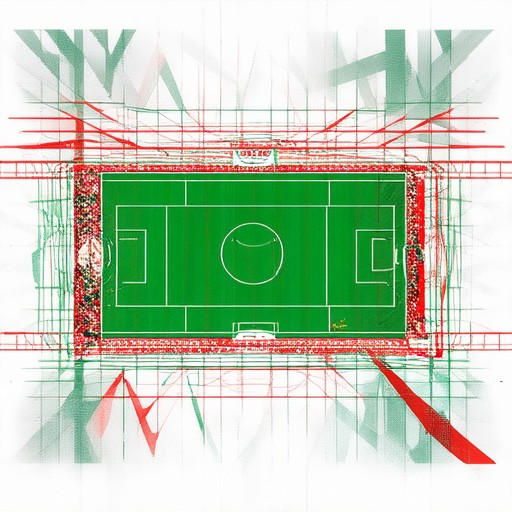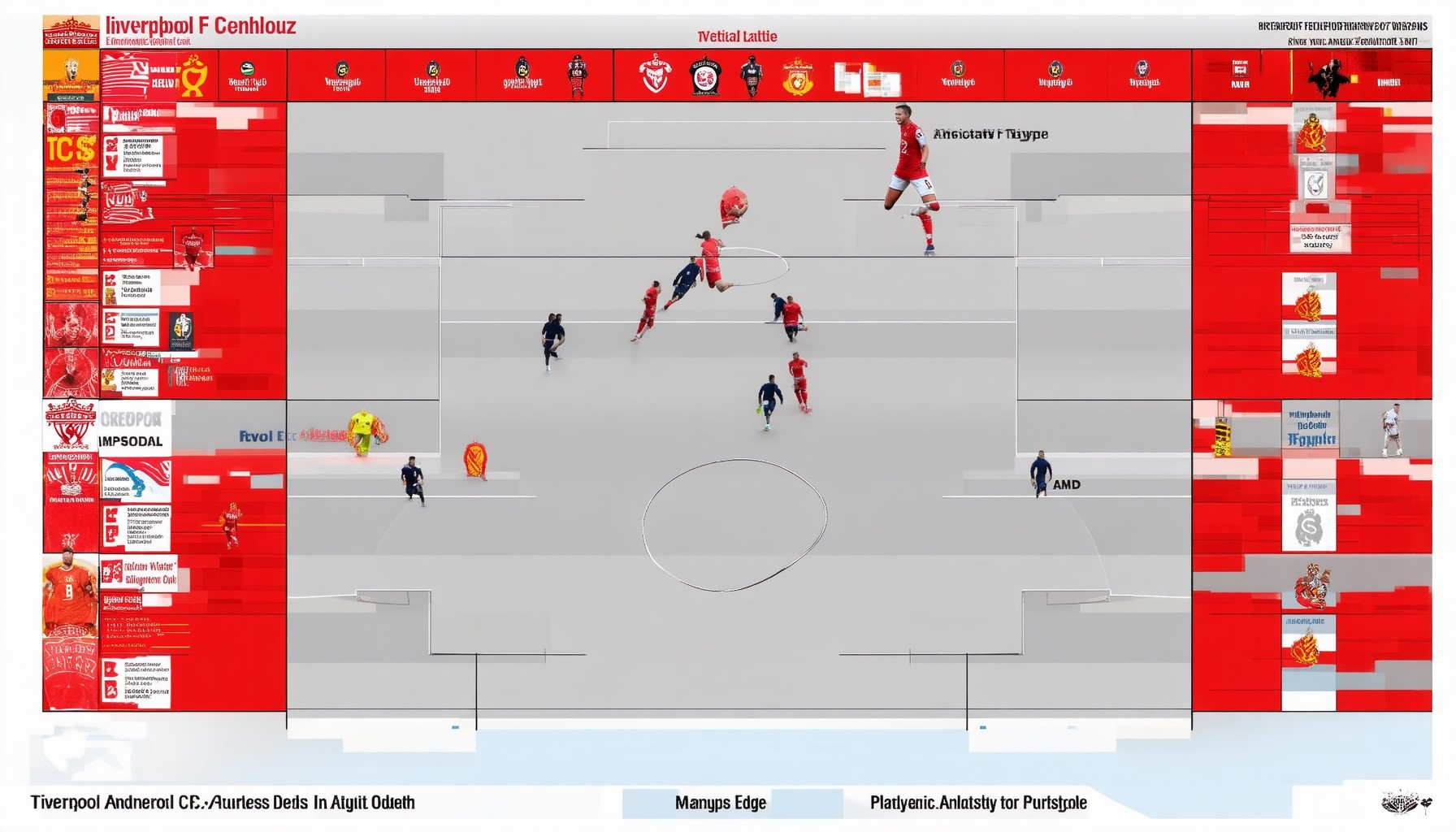Liverpool FC continues to reign as one of the most formidable forces in English football, consistently delivering performances that captivate fans worldwide. With a rich history of success and a reputation for innovative tactics, the club has long been synonymous with excellence on the pitch. Recent victories, including the Premier League title, underscore their ability to adapt and evolve, making them a benchmark for modern football.

What Tactic Does Liverpool Use?
Liverpool employs a dynamic and attacking style of play under manager Jürgen Klopp, characterized by high pressing, quick transitions, and fluid movements. Here are the key tactics that define their gameplay:
- High Pressing: Liverpool’s midfielders aggressively close down opponents, forcing turnovers and disrupting their rhythm. This tactic is crucial for regaining possession and launching counter-attacks.
- Full-Back Involvement: Both Virgil van Dijk and Andy Robertson frequently join the attack, providing width and overlapping runs. This creates numerical advantage in advanced positions and stretches opposing defenses.
- Positional Play: The team prioritizes controlling space and exploiting gaps in the opponent’s defense. Their ability to disorganize defenses with quick passing and movement leads to scoring opportunities.
- Transition Game: Liverpool quickly transitions from defense to attack, capitalizing on mistakes made by opponents caught out of position. This often leads to fast-break goals.
- Set-Piece Expertise: While not the primary focus, Liverpool utilizes set-pieces effectively, particularly from free-kicks and corners, thanks to the expertise of players like Trent Alexander-Arnold.
These tactics, combined with world-class individual talent and cohesive teamwork, make Liverpool a formidable force in English football, consistently competing for titles and trophies.
What Tactical Preset Does Liverpool Use?
Liverpool’s tactical approach is defined by a dynamic and versatile system that emphasizes high pressing, fluidity, and adaptability. The club employs a flexible 4-3-3 formation, which allows for significant variation depending on the game situation. Here’s a breakdown of their key tactical elements:
Defensive Style
- High Pressing: Liverpool defenders are instructed to press opponents aggressively, reducing space quickly and forcing turnovers in dangerous areas.
- Aggressive Marking: The defensive line works closely together, using man-marking techniques to limit the opposition’s ability to create chances.
Midfield Role
- Box-to-Box Midfielder: A central midfielder is typically assigned to cover defensively while also contributing offensively, transitioning between defense and attack smoothly.
- Quick Transitions: Midfielders are encouraged to move the ball quickly into attack, leveraging Liverpool’s ability to exploit half-spaces and overlap.
Attacking Style
- Overlapping Full-Backs: Full-backs are often instructed to join the attack, stretching the opposing defense and creating width.
- Inverted Wingers: Wingers are positioned closer to the center to combine play with central attackers, bypassing defensive blocks.
Key Characteristics
- Fluid Movement: Players are encouraged to shift positions seamlessly, allowing for fluid rotations and interchange.
- Exploiting Space: Liverpool’s players are trained to identify and exploit pockets of space, particularly in wide areas and behind the defensive line.
This tactical preset allows Liverpool to adapt to different opponents and game situations, making them a formidable force both defensively and offensively.

Are Liverpool FC in Debt?
Liverpool Football Club (LFC), one of the most prominent football clubs globally, has faced financial management challenges like many other organizations. As of recent financial reports, Liverpool FC maintains a significant level of debt, primarily due to investments in infrastructure projects such as stadium renovations and player acquisitions.
The club’s financial strategy has involved taking on loans and ownership stakes to manage cash flow, particularly during major capital expenditures. While Liverpool FC continues to generate substantial revenue through matchday income, commercial partnerships, and merchandise sales, the club’s debt remains a point of interest for fans and analysts alike.
- As of the latest financial statements, Liverpool FC’s total debt is estimated to be around £300 million.
- A portion of this debt is tied to the Anfield stadium expansion project, which has been a major investment over the past few years.
- The club has also utilized owner loans and bank borrowings to fund these expenditures, with the owner’s stake increasing significantly.
- Despite the debt levels, Liverpool FC remains financially stable, with strong revenue generation and a global brand presence.
For more detailed insights into Liverpool FC’s finances and operations, visit The Anfield Talk , our dedicated platform for LFC news and analysis.

Understanding the 424 Formation at Liverpool
Liverpool’s 424 formation, also known as the 4-2-4-0 system, is a unique approach that highlights the club’s ability to adapt strategically during games. This formation typically features four defenders, two midfielders, and four attackers, creating a balanced setup that emphasizes fluidity and press resistance.
When in possession, the team resembles a 4-2-4 configuration, with players like Curtis Jones and Dominik Szoboszlai often operating in central roles. During pressing phases, the wingers push high, and the midfielders drop back to fill defensive gaps, effectively forming a compact unit that limits the opponent’s counterattacks.
This system is particularly effective when facing defensive-oriented opponents, allowing Liverpool to maintain control without a traditional striker. It showcases the club’s tactical versatility, blending attacking intent with solid defensive organization.
How Does Liverpool FC Approach Their Gameplay Tactically?
Liverpool FC employs a dynamic and evolving tactical approach that emphasizes high-intensity pressing, fluid formations, and adaptability to counter opponents. Their strategy is rooted in quick transitions, spatial awareness, and exploiting defensive weaknesses. Here’s a breakdown of their key tactical elements:
- High Pressing Strategy: Liverpool often uses an aggressive high-pressing game plan to disrupt opponents. This involves immediate pressure on the ball carrier, forcing turnovers in dangerous areas. Their ability to recover quickly after losing possession has been a hallmark of their success under manager Jürgen Klopp.
- Fluid Formations: The team frequently switches between different formations (4-3-3, 4-4-2, and 3-4-3) depending on the opponent and game situation. This flexibility allows Liverpool to dominate possession while adapting to the opposition’s strengths and weaknesses.
- Possession-Based Play: Klopp’s philosophy centers on controlling the game through possession. Liverpool looks to retain the ball in advanced areas, using short passing and incisive one-twos to create chances. Their midfielders excel at breaking lines with progressive carries and intelligent runs.
- Defensive Structure: While not traditionally a defensively dominant side, Liverpool’s full-backs excel in attacking roles, contributing to goals and creating width. Their defensive organization focuses on compactness and quick transitions to exploit counter-attacks.
- Set-Piece Expertise: Liverpool has a strong history of scoring from set-pieces, thanks to their physicality and aerial prowess. Their ability to deliver dangerous crosses and find late runners makes them a threat from dead balls.
Liverpool’s tactical approach reflects a blend of modern football philosophy and Klopp’s unique leadership. Their ability to adapt and impose their style on opponents has made them one of the most formidable teams in world football.

How Does Liverpool FC Approach Their Gameplay Tactically?
Liverpool FC employs a dynamic and evolving tactical approach that emphasizes fluidity, high pressing, and adaptability. Their strategy revolves around three primary pillars: possession-based play, high-intensity pressing, and defensive stability. These elements work seamlessly to dominate matches and outperform competitors.
- High Pressing Strategy: Liverpool’s high press is renowned for disrupting opponents’ build-up play. Players are instructed to quickly close gaps and win balls in dangerous areas, forcing the opposition into mistakes.
- Possession-Based Play: The team prioritizes retaining possession through quick passing, vertical movements, and intelligent link-ups between attackers and midfielders. This ensures they can exploit defensive weaknesses.
- Defensive Stability: While often seen as a weaker aspect, Liverpool’s defense has improved significantly. They use zonal marking, man-marking, and compactness to limit space and counter-attacks effectively.
- Set-Piece Expertise: Liverpool’s ability to convert set-pieces into goals is a key part of their attacking play. Their aerial threat and well-drilled set-piece routines make them a constant danger.
The club’s tactical DNA also includes flexibility. Jurgen Klopp’s influence has made Liverpool adaptable, capable of shifting formations (often 4-3-3 or 4-4-2) depending on the opponent. This versatility allows them to exploit different playing styles and maintain pressure throughout the match.
In conclusion, Liverpool’s tactical approach is a blend of aggressive pressing, precise positional play, and solid defense. This combination creates a balanced team that is both offensive and defensively robust, making them a formidable force in English football.





0 Comments